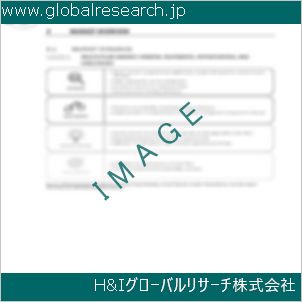Table of Contents
1 Industry Overview of Mannitol
1.1 Definition and Specifications of Mannitol
1.1.1 Definition of Mannitol
1.1.2 Specifications of Mannitol
1.2 Classification of Mannitol
1.3 Applications of Mannitol
1.3.1 Nuclear Application
1.3.2 Non-Nuclear Application
1.4 Industry Chain Structure of Mannitol
1.5 Industry Overview and Major Regions Status of Mannitol
1.5.1 Industry Overview of Mannitol
1.5.2 Global Major Regions Status of Mannitol
1.6 Industry Policy Analysis of Mannitol
1.7 Industry News Analysis of Mannitol
2 Manufacturing Cost Structure Analysis of Mannitol
2.1 Raw Material Suppliers and Price Analysis of Mannitol
2.2 Equipment Suppliers and Price Analysis of Mannitol
2.3 Labor Cost Analysis of Mannitol
2.4 Other Costs Analysis of Mannitol
2.5 Manufacturing Cost Structure Analysis of Mannitol
2.6 Manufacturing Process Analysis of Mannitol
3 Technical Data and Manufacturing Plants Analysis of Mannitol
3.1 Capacity and Commercial Production Date of Global Mannitol Major Manufacturers in 2023
3.2 Manufacturing Plants Distribution of Global Mannitol Major Manufacturers in 2023
3.3 R&D Status and Technology Source of Global Mannitol Major Manufacturers in 2023
3.4 Raw Materials Sources Analysis of Global Mannitol Major Manufacturers in 2023
4 Capacity, Production and Revenue Analysis of Mannitol by Regions, Types and Manufacturers
4.1 Global Capacity, Production and Revenue of Mannitol by Regions 2019-2024
4.2 Global and Major Regions Capacity, Production, Revenue and Growth Rate of Mannitol 2019-2024
4.3 Global Capacity, Production and Revenue of Mannitol by Types 2019-2024
4.4 Global Capacity, Production and Revenue of Mannitol by Manufacturers 2019-2024
5 Price, Cost, Gross and Gross Margin Analysis of Mannitol by Regions, Types and Manufacturers
5.1 Price, Cost, Gross and Gross Margin Analysis of Mannitol by Regions 2019-2024
5.2 Price, Cost, Gross and Gross Margin Analysis of Mannitol by Types 2019-2024
5.3 Price, Cost, Gross and Gross Margin Analysis of Mannitol by Manufacturers 2019-2024
6 Consumption Volume, Consumption Value and Sale Price Analysis of Mannitol by Regions, Types and Applications
6.1 Global Consumption Volume and Consumption Value of Mannitol by Regions 2019-2024
6.2 Global and Major Regions Consumption Volume, Consumption Value and Growth Rate of Mannitol 2019-2024
6.3 Global Consumption Volume and Consumption Value of Mannitol by Types 2019-2024
6.4 Global Consumption Volume and Consumption Value of Mannitol by Applications 2019-2024
6.5 Sale Price of Mannitol by Regions 2019-2024
6.6 Sale Price of Mannitol by Types 2019-2024
6.7 Sale Price of Mannitol by Applications 2019-2024
6.8 Market Share Analysis of Mannitol by Different Sale Price Levels
7 Supply, Import, Export and Consumption Analysis of Mannitol
7.1 Supply, Consumption and Gap of Mannitol 2019-2024
7.2 Global Capacity, Production, Price, Cost, Revenue, Supply, Import, Export and Consumption of Mannitol 2019-2024
7.3 USA Capacity, Production, Price, Cost, Revenue, Supply, Import, Export and Consumption of Mannitol 2019-2024
7.4 EU Capacity, Production, Price, Cost, Revenue, Supply, Import, Export and Consumption of Mannitol 2019-2024
7.5 China Capacity, Production, Price, Cost, Revenue, Supply, Import, Export and Consumption of Mannitol 2019-2024
7.6 Japan Capacity, Production, Price, Cost, Revenue, Supply, Import, Export and Consumption of Mannitol 2019-2024
8 Major Manufacturers Analysis of Mannitol
8.1 Manufacturer One
8.1.1 Company Profile
8.1.2 Product Picture and Specifications
8.1.2.1 Type I
8.1.2.2 Type II
8.1.2.3 Type III
8.1.3 Capacity, Production, Price, Cost, Gross and Revenue
8.1.4 Contact Information
8.2 Manufacturer Two
8.2.1 Company Profile
8.2.2 Product Picture and Specifications
8.2.2.1 Type I
8.2.2.2 Type II
8.2.2.3 Type III
8.2.3 Capacity, Production, Price, Cost, Gross and Revenue
8.2.4 Contact Information
8.3 Manufacturer Three
8.3.1 Company Profile
8.3.2 Product Picture and Specifications
8.3.2.1 Type I
8.3.2.2 Type II
8.3.2.3 Type III
8.3.3 Capacity, Production, Price, Cost, Gross and Revenue
8.3.4 Contact Information
8.4 Manufacturer Four
8.4.1 Company Profile
8.4.2 Product Picture and Specifications
8.4.2.1 Type I
8.4.2.2 Type II
8.4.2.3 Type III
8.4.3 Capacity, Production, Price, Cost, Gross and Revenue
8.4.4 Contact Information
8.5 Manufacturer Five
8.5.1 Company Profile
8.5.2 Product Picture and Specifications
8.5.2.1 Type I
8.5.2.2 Type II
8.5.2.3 Type III
8.5.3 Capacity, Production, Price, Cost, Gross and Revenue
8.5.4 Contact Information
…
9 Marketing Trader or Distributor Analysis of Mannitol
9.1 Marketing Channels Status of Mannitol
9.2 Traders or Distributors with Contact Information of Mannitol by Regions
9.3 Ex-work Price, Channel Price and End Buyer Price Analysis of Mannitol
9.4 Regional Import, Export and Trade Analysis of Mannitol
10 Industry Chain Analysis of Mannitol
10.1 Upstream Major Raw Materials Suppliers Analysis of Mannitol
10.1.1 Major Raw Materials Suppliers with Contact Information Analysis of Mannitol
10.1.2 Major Raw Materials Suppliers with Supply Volume Analysis of Mannitol by Regions
10.2 Upstream Major Equipment Suppliers Analysis of Mannitol
10.2.1 Major Equipment Suppliers with Contact Information Analysis of Mannitol
10.2.2 Major Equipment Suppliers with Product Pictures Analysis of Mannitol by Regions
10.3 Downstream Major Consumers Analysis of Mannitol
10.3.1 Major Consumers with Contact Information Analysis of Mannitol
10.3.2 Major Consumers with Consumption Volume Analysis of Mannitol by Regions
10.4 Supply Chain Relationship Analysis of Mannitol
11 Development Trend of Analysis of Mannitol
11.1 Capacity, Production and Revenue Forecast of Mannitol by Regions and Types
11.1.1 Global Capacity, Production and Revenue of Mannitol by Regions 2024-2029
11.1.2 Global and Major Regions Capacity, Production, Revenue and Growth Rate of Mannitol 2024-2029
11.1.3 Global Capacity, Production and Revenue of Mannitol by Types 2024-2029
11.2 Consumption Volume and Consumption Value Forecast of Mannitol by Regions, Types and Applications
11.2.1 Global Consumption Volume and Consumption Value of Mannitol by Regions 2024-2029
11.2.2 Global and Major Regions Consumption Volume, Consumption Value and Growth Rate of Mannitol 2024-2029
11.2.3 Global Consumption Volume and Consumption Value of Mannitol by Types 2024-2029
11.2.4 Global Consumption Volume and Consumption Value of Mannitol by Applications 2024-2029
11.3 Supply, Import, Export and Consumption Forecast of Mannitol
11.3.1 Supply, Consumption and Gap of Mannitol 2024-2029
11.3.2 Global Capacity, Production, Price, Cost, Revenue, Supply, Import, Export and Consumption of Mannitol 2024-2029
11.3.3 USA Capacity, Production, Price, Cost, Revenue, Supply, Import, Export and Consumption of Mannitol 2024-2029
11.3.4 EU Capacity, Production, Price, Cost, Revenue, Supply, Import, Export and Consumption of Mannitol 2024-2029
11.3.5 China Capacity, Production, Price, Cost, Revenue, Supply, Import, Export and Consumption of Mannitol 2024-2029
11.3.6 Japan Capacity, Production, Price, Cost, Revenue, Supply, Import, Export and Consumption of Mannitol 2024-2029
12 New Project Investment Feasibility Analysis of Mannitol
12.1 New Project SWOT Analysis of Mannitol
12.2 New Project Investment Feasibility Analysis of Mannitol
13 Conclusion of the Global Mannitol (CAS 87-78-5) Industry 2024 Market Research Report
| ※参考情報 マンニトールは、化学式 C6H14O6 を有する糖アルコールであり、主に植物の細胞で自然に生成される物質です。CAS番号は87-78-5としても知られています。マンニトールは、白色の結晶性粉末であり、ほのかな甘味を持っていますが、砂糖のような甘さは少なく、カロリーが低いことが特徴です。甘味が控えめなため、ダイエット食品や糖尿病向けの製品にも利用されています。 マンニトールは、通常、さまざまな種類の食品や医薬品の添加物として広く利用されています。特に、食品業界では、低カロリーや低GI(グリセミック指数)の製品にあたるものに使用されることが一般的です。また、マンニトールは腸内で吸収されにくいため、腸内環境に影響を与えにくく、便秘解消や腸内フローラの改善を目的とした製品にも使用されています。 マンニトールのもう一つの重要な用途は、医療分野における利尿作用です。特に、脳圧の急性上昇や眼圧の管理に使われることがあります。マンニトールは、腎臓による水分排出を促進するため、術後の浮腫や脳神経外科手術後の患者に投与されることがあります。これにより、体液のバランスを調整し、圧力を下げる効果があります。 種類の面では、マンニトールにはいくつかの形態があります。純粋なマンニトールの他に、他の甘味料や添加物と組み合わせて使用されることがあります。また、製造方法には化学合成や自然抽出があり、ビール、果物、野菜などに自然に含まれることが多いです。合成プロセスでは、糖を水素化することによってマンニトールが生成されます。 関連する技術的な側面としては、マンニトールは一般的に溶解性が高く、熱にも安定しているため、様々な食品プロセスに適しています。そのため、製造時の処理条件によっては、ゲル状の物質や顆粒状に加工されることもあります。こうした特性は、マンニトールを食品のテクスチャー改善に利用する上で重要です。 特に、マンニトールの使用は、製品の保存性を向上させる効果もあります。マンニトールを添加することで、食品の水分活性を下げ、カビや細菌の発生を抑制することが可能です。このような保存技術は、特にプロセス食品や調整食品において重要です。 ただし、マンニトールには一定の制約もあります。高用量で摂取すると、消化不良を引き起こす可能性があるため、摂取量には注意が必要です。特に、腸において発酵することでガスを生成し、腹部膨満感を引き起こすことがあります。これにより、過敏性腸症候群やその他の消化器系の問題を抱える患者に対しては慎重な使用が求められます。 さらに、マンニトールの生産には環境への配慮が不可欠です。製造過程でのエネルギー消費や副産物の処理など、持続可能な方法での生産が重要視されています。最近の科学技術の進歩により、より効率的かつ環境にやさしい生産方法が模索されています。 結論として、マンニトールは甘味料としての利用から医療への応用に至るまで、その多面的な特性により、多くの分野での需要が高まっています。特に、健康志向の高まりとともに、低カロリー食品や機能性食品の需要が増加する中で、マンニトールはその特性を活かしてますます重要な役割を果たしています。今後の研究や技術革新により、さらなる用途の開発が期待される分野であると言えるでしょう。 |
❖ 免責事項 ❖
http://www.globalresearch.jp/disclaimer


-gr.jpg)









